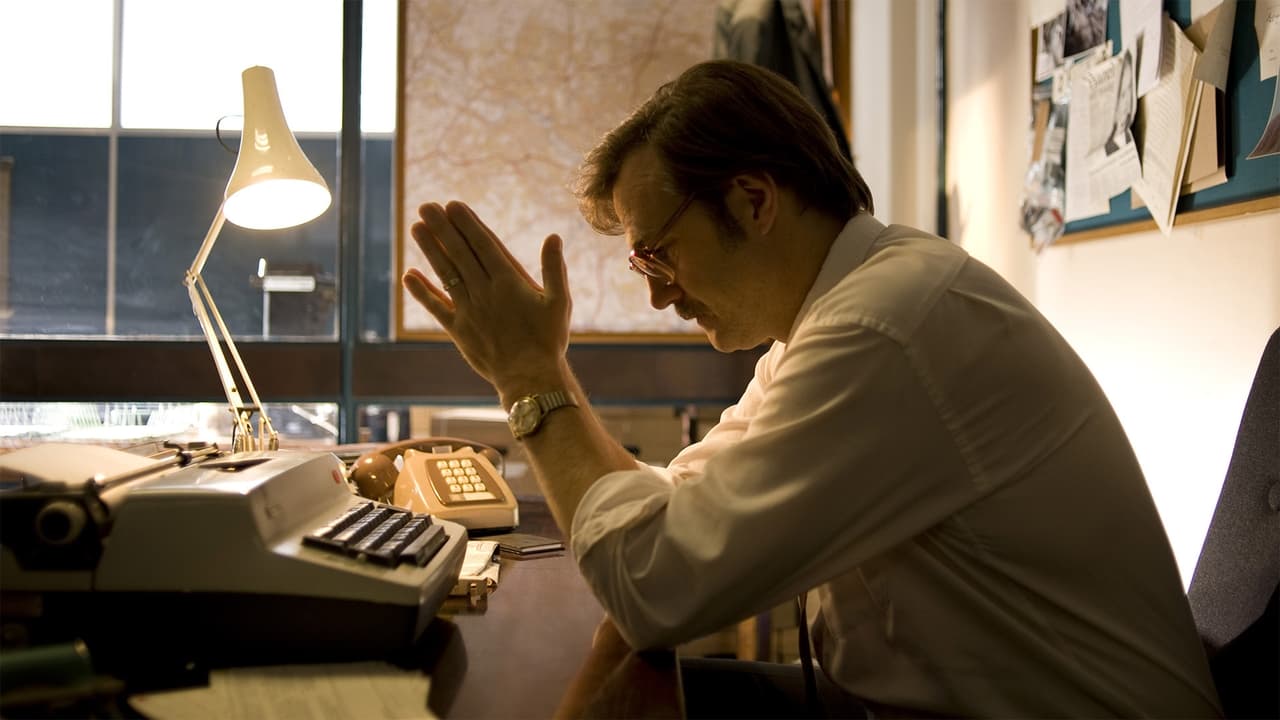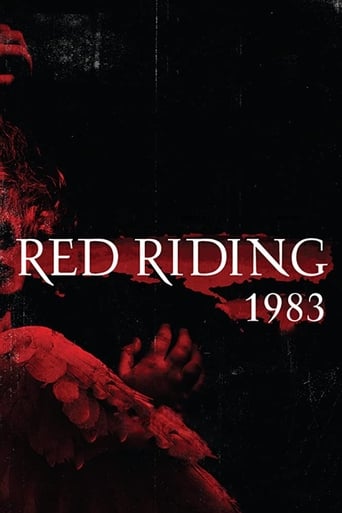

Purely Joyful Movie!
... View MoreExcellent, Without a doubt!!
... View MoreIt isn't all that great, actually. Really cheesy and very predicable of how certain scenes are gonna turn play out. However, I guess that's the charm of it all, because I would consider this one of my guilty pleasures.
... View MoreIt is an exhilarating, distressing, funny and profound film, with one of the more memorable film scores in years,
... View MoreVicious, disgusting, more than gory, just gross, and yet so true to "life" if this is life. It sure is Yorkshire, accent, desolation and misery (more than plain and simple poverty), cruelty, pollution, greed, vice, perversion, etc. spread all over. All evils in one pouch, one bag in West Yorkshire and the motto that "this is the north, where we do what we want," that's the great beauty of ugliness.It will take you three long episodes to reach the culprit and you won't be surprised at all when you finally come to him. In the meantime the police would have revealed itself the most odious, ferocious and mentally cannibalistic institution you can imagine. Asking a question for them is necessarily hurting, torturing and a few other things of the sort: breaking fingers, crushing burning cigarettes anywhere you can imagine, stripping the suspects naked, and the films do not show them naked (prudes!). There is not one single person in the police force that is able to do anything regular like find a culprit that is really guilty and bring that one to justice. One journalist is driven to craziness and some deadly justice enforcing spree, and yet you will know if he was right in his choice of targets at the end of the third film. Another young man, slightly spaced out will be convinced under duress by everyone, probably only in the police, that he killed the girl. And he will end his life in prison. With little chance to be retried since he signed a confession and pleaded guilty.And quite a few are questioned that way and yet the crimes are going on: kidnapped girls, then raped, and in many ways cut up and carved up and more or less endowed with wings and feathers. And all that in a society that is rotten to the core, that speculates on the death of as many people as possible with pollution and the exploitation of them as long as they live with projects that are as crazy as they are greedy of shopping malls with cinemas and all kinds of entertainments to empty the billfolds of the gullible submissive slaves of the public till they are empty and they can then commit suicide or die young of any kind of hazardous escaping tentative or industrial pollution. And for the girls and women prostitution and promiscuity are the main two udders of everyday suspended death. You can imagine what the other two are.And be sure that all the cadres of the police and the most respected people in this society, lay and clerical, are among the small circle of speculators and their only aim is to make money and thus to keep the surrounding society going because you cannot squeeze money out of marginal miserable derelict and impoverished proletariat. No matter what, they must have just a little bit more than their basic needs to be able to spend that little bit more in the traps of the entertaining plotters.Is it a great trilogy? I do not know but one thing is sure even if at the end the killer is finally put out of the way all the corrupted elite of this part of Yorkshire will not be in any way even questioned, not to speak of prosecuted. After all corruption is the basic human dimension: the survival instinct of the more corrupted declared the fitter, by all means, even selling their parents into slavery and feeding their own children to the industrial sharks of our certainly not post-modern society but definitely pre-modern jungle.Dr Jacques COULARDEAU
... View More...this series should have ended at the end of Red Riding - 1980 or have consumed the plot of 1983 into 1980. The only resolution I saw was the Reverend Haws - I will say the writer of 1980 made known the distorted morals of Rev. Haws as he assisted 'Elizabeth Hall' (Julia Ford) to have an abortion as well as hitting on her when he meets 'Peter Hunter' (Paddy Considine) for the 1st time.Not to say clergy haven't, justifiably, been 'outted' as monsters - they have and should always be - bluntly there was no 'just desserts' for any of the big police officials - This could have been done lightly but firmly for the finale - it wasn't - this was poorly concluded with a lot of loose loose ends.
... View More!!!!!! SLIGHT SPOILERS TO ALL THREE EPISODES !!!!!! RED RIDING is one of these dramas that comes along heavily hyped before the first episode is broadcast . It's an adaptation of a highly regarded series of novels by David Peace spanning two decades and revolving around police corruption in Yorkshire . It's a realistic enough premise , the problem though is this corruption and police brutality is overplayed and while it may be " grim oop north " you get the feeling you're watching something from a parallel universe . A sort of LIFE ON MARS that's literally taking place on a terraformed Martian landscape The first episode features a twisting , turning gritty plot that ends with a bloodbath in a nightclub . Some of the second episode adds new twists to the previous part but mainly concentrates instead on a new police detective taking over the real life Yorkshire Ripper case . The concluding part of the trilogy then totally ignores part two and leads to an unsatisfactory conclusion It seems wrong criticising a production that involves gritty bone crunching adult drama but RED RIDING proves that if the plot doesn't stand up to scrutiny then no amount of superb cinematography , clever casting , intense acting and compelling dialog can save it .The second part is the best example . Paddy Considine plays Peter Hunter , a detective brought in to investigate the Yorkshire Ripper murders only to find a conspiracy against him . This mirrors real life events and the Ripper investigation is something West Yorkshire police should never feel proud of . Hunter is then written out of the story in an absolutely ridiculous left field way that will have you tuning in to the next episode if only to find out how this plot turn is followed up . With hindsight it's very obvious how the event is going to play out - it's not referred to at all. . There's also an aspect to this episode that made my skin crawl and that is it features the real life serial killer Peter Sutcliffe being used for dramatic purposes Episode three is rather slower paced than the first two episodes and there's something irritating and unsatisfactory about it . Leaving aside that none of it ties in with with the totally disposable part two director Anand Tucker throws a spanner in the works by never making it clear that we're seeing flashbacks to 1974 which had me thinking Sean Bean's character had some how become magically resurrected . This certainly down to the fact that the mis en scene never looks like 1983 Add to that plot lines are never satisfactorily tied up and this audience member felt like he wasted his time watching the trilogy Again I have to repeat I'm loathe to criticise someone making adult bleak drama but RED RIDING falls in to exploitation television . We can believe in corrupt cops beating confessions out of innocent men but to see them running around like a third world death squad liquidating opponents and manipulating events to their own ends as seen here jumps the shark so highly that it's in danger of going out of orbit and landing on the Martian stratosphere
... View MoreThis third part of the mini series presents once more a different genre with this very insightful and philosophical conclusion. The movie is less darker and brutal than the first two ones and talks more about hope than desperation. The movie talks about moral, forgiveness and remorse and presents once more a few new and profound characters.The movie has three main actors and begins with the fact that another young girl has been kidnapped nine years after the last murder. The remorseful cop Maurice Jobson, played by the brilliant David Morissey, wants to stop the insanity and begins to question the corruption, the violence and lies within the police. He falls in love with a clairvoyant and wants to save the kidnapped girl with her while his partners try to find a scapegoat for the new crime. He realizes that he has done some mistakes in his life and wants to change. He is now looking for forgiveness, truth and justice.The second main character is the fat and disillusioned lawyer John Piggott, played in a rather mediocre way by Mark Addy, whose father was one of the corrupt police officers that has been killed in mysterious circumstances, helps after much hesitation the mothers of the two scapegoats that are or have to go to prison for crimes they didn't commit.The third main character is the young and homosexual BJ, brilliantly played by Robert Sheehan, who has escaped from Torkshire and travels around the country to come back for a last act of vengeance.All those three characters come together in a grand finale. But before this conclusion, the story meanders back and forth through space and time and creates connections to the first two movies and even new connections beyond that. Those scenes help to create once more some very diversified and profound characters but it is sometimes difficult to follow this pattern and to understand what is happening right now or in the past. There are many flashbacks and changes of space and time in the movie and that makes it less dynamical and intense to watch than the first two ones. The strong point of the movie are the interesting characters and the fact that many points are explained and many questions are answered to that haven't been before.But I still felt disappointed about the conclusion. It seems too simple to me and I would have liked to have some more original explications, for example concerning the connection of the businessman Dawson to the murders.Because of the conclusion and less intense atmosphere, this third part is the weakest one of the series in my opinion. But I still gave seven stars because of the interesting characters and the fact that almost everything is explained in the conclusion of the movie. The philosophical style of this movie is very interesting but I preferred the drama style of the second or the first movie that was a great film noir and my favourite part of the series.All in all, this trilogy is interesting to watch and really presents three different kinds of a movie and creates connections in between them in an interesting way. Artistically, those series are really well done and most of the actors did an amazing job. But there is a lack of suspense in this slow paced series and the criminal investigations are rather boring. It was a good idea to watch the series, but honestly, I wouldn't but it or watch it again for a while.1974: 7,5 stars 1980: 7 to 7,5 stars 1983: 7 stars
... View More